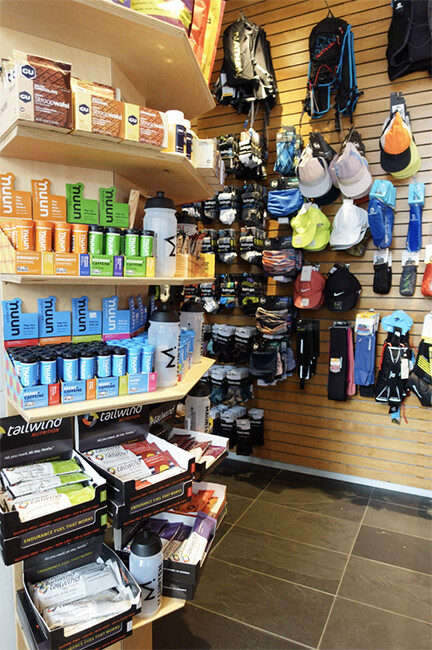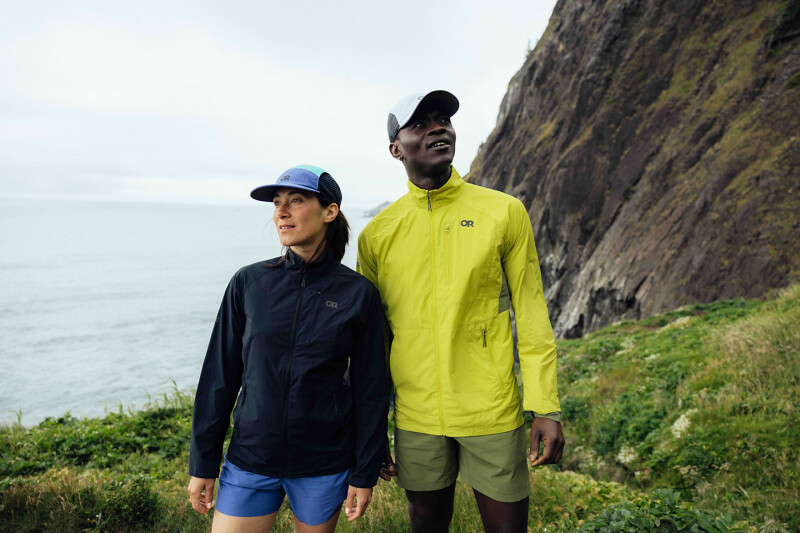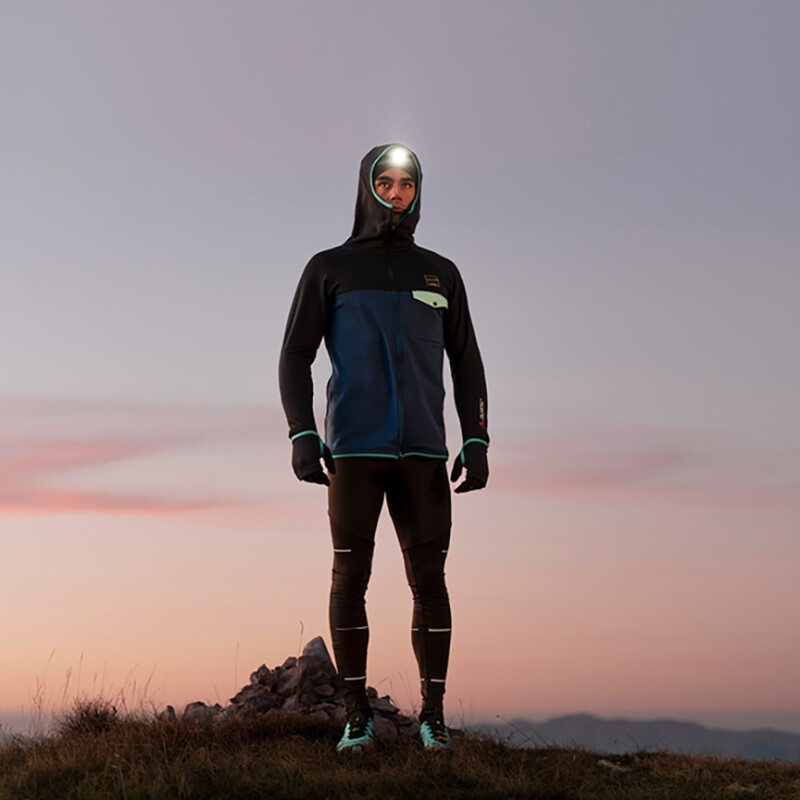Expanding a run specialty product assortment to include essentials and accessories will keep customers coming back to you as the go-to resource for everything running. The trick, however, is knowing what your runners need to be wearing from head to toe, what they need to feel good pre- and post-run and what’s required to fully live the running life.
So now you might be asking yourself: “Hold on a minute, so I have to potentially add nutrition, lights and sunglasses to my inventory? What’s the value in that?”
Or some retailers might already be on board the essentials train, but ask: “I’m already bringing in accessories, but how do I know exactly what or how much stuff to bring in?”
And then the real marathoners in the retail world might be asking “We’ve got a good handle on accessories and we want to make our own, but how do we get started?”
All of which are great questions. Here are some answers to remove the guesswork to expand a product assortment to have more tools to surprise and delight your customers.
1. One-Stop Shop
Let’s think of ourselves as a consumer for a moment and ask ourselves, “What would be easier, visiting four different stores to find everything I’m looking for, or just one?”
Clearly, it’s more efficient to complete all transactions in a single place. As a running retailer, it would be detrimental to have a customer get their shoes from you, but go elsewhere to buy a cool hat or the techiest sunglasses.
Accessorizing your assortment ensures that a customer completes his or her look with you so they don’t have to think about how to style an outfit. This eliminates guesswork for the customers as to what they need and where they should buy.
Other categories, such as men’s formal wear, for example, excel at this. Suits are sold alongside shoes, plus fragrance, shoe laces and pocket squares. Luxury leather goods is another example where an assortment of bags has peripherals such as footwear, wallets and scarves to complement the apparel outfit.
But, of course, there is a bigger story to be told than just the run itself.
Runners have their pre-run prep and post-run recovery rituals. This opens the door to a larger, supporting cast of accessories, including supplements, lights and garment care items.
The message is simple: If a retailer can curate the right products, they can showcase the entire running journey plus adjacent activities.
What does this mean for you? This entices the customer to spend more time in your store versus heading to the competition to fill in the gaps. Naturally, this leads to an increase in basket size. Better yet, you are creating an all-in-one running destination by showing customers that you have everything they need pre- and post-run.
2. The Customer Is Your Partner
Now that we have identified the value of bringing these essentials into your product assortment, the next step is to consider which products to stock.
Should you lean towards supplements, recovery items or race gear? Should you pick just one or bring in all three? Choose carefully because there are implications in choosing a dud. Cash tied up in dead stock and holding excess inventory can send your margins in a tailspin.
There is a guiding light to help you make assortment decisions. It already exists within your four walls — your customers. That’s because running stores are much more than a place to transact — they serve as a hub and destination within the community.
Naturally, it becomes easy to get feedback and insights directly from them. Chat with your best customers and ask what they are buying from other places that they would buy from you?
What are they searching for, but can’t find? Did they see something on their favorite athlete that is a must-have? The key here is determining what they don’t buy from you and why.
Next, reach into the data that you might already be collecting about your shoppers. For example, retailers with a loyalty program can create customer segments and personas. If e-commerce is available, there are insights in search data and abandoned carts. This provides clues as to what the customer is looking for.
Finally, shopping the market is critical. Comp shopping the big-box stores, walking trade shows and observing what your competitors are stocking is part of the retail journey. Seeking trends and seeing if competitors are stocking products could be a sign of something you need to test in your stores.
Feedback, data and comp shopping will eliminate your guesswork when looking to expand your product mix.
3. Fill the Gap
Okay, we know essentials can be valuable and we have customer data telling us what they want. Next, let’s take action to fill the assortment gap.
Start with your vendors. Give your vendor partners results of your customer feedback inquiries and the data you have captured from identifying assortment gaps. In return, offer up your stores to be a testing center for new products that aim to fill the void in the assortment. Testing before committing to large quantities will help protect your gross margin and valuable real estate.
Curate with the newbies. New vendors will be especially keen to partner with established run specialty retailers to gain market entry. Partner with the new brands to provide items that will not be found in other stores; this leads to a wonderful discovery experience for customers. If the new vendor becomes a hit, there is tremendous value in the long term for you as an early adopter.
Go Private. Major retailers are moving into private label because of the healthy margins it has to offer. Tap into your vendor community and test your own brand across selected essential categories. Co-branding with your vendors provides access to skilled designers and developers, thus, lowering your barrier to entry.
Hats or mugs with your logo can help style your apparel and footwear selection along with being a great marketing tool. Involve your customers in the design of the product and give them exclusive access when it is ready to launch. Again, the power of the running community can’t be understated here.
The BlackToe Story
Looking for an example to tie everything together, we reached out to the owners of a prominent running destination in the heart of Toronto, BlackToe Running, on how they are able to leverage the above principles to expand their accessories assortment. (BlackToe has been operating in the downtown Toronto area since 2013 and recently launched its second storefront in midtown.)
They told us the story of how they teamed up with hat brand Ciele when they first launched, giving them the real estate in-store to showcase their hats. Customer feedback was positive and the brand sold out within weeks. Both the store and vendor grew in tandem and Ciele is now a global household brand.
Being the first to carry the brand helped BlackToe differentiate itself from other run stores. Moreover, the owners consistently tap into the BlackToe running community and their own brand ambassadors to gather intel on what else should be brought into the store.
Expanding To Serve
The value in expanding product assortments to include accessories comes from aligning with what the customer needs. The benefits are three-fold:
• Diversifying your core product mix with essentials will help your customer complete their look and keep them shopping in your stores.
• Talking to your customers removes the guesswork in what you should fold into your assortment.
• Finally, taking the learnings from your customers back to your vendors to develop and test products serves to fill the assortment gap.
Retail Strategy Group works with global retailers, brands and retail tech companies to help them achieve business growth. Their newsletter, The Merchant Life, attracts niche retailers, VPs and C-suite executives because of their thought leadership. To connect with them: www.retailstrategygroup.com or at www.themerchantlife.com Or emailprincipal and co-founder, Liza Amlani, at [email protected]






